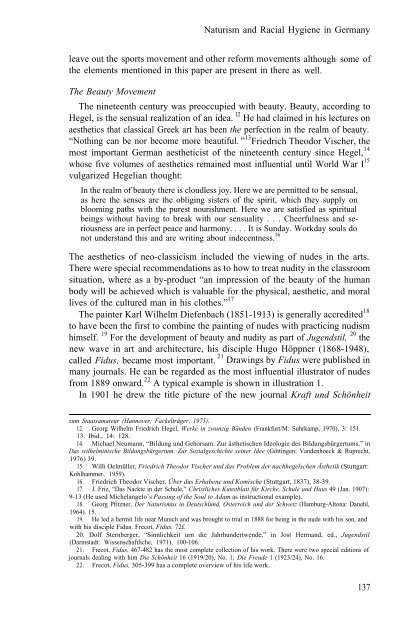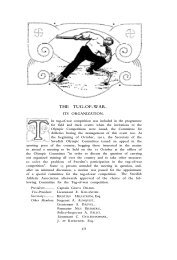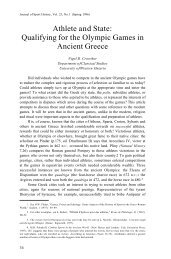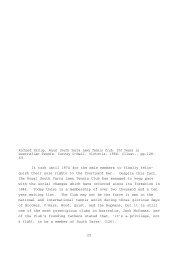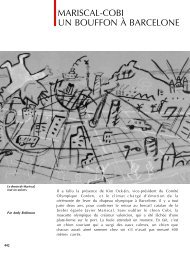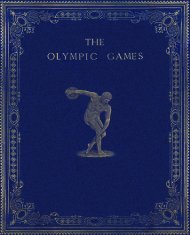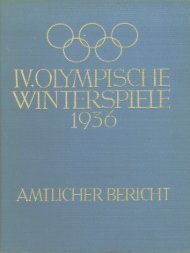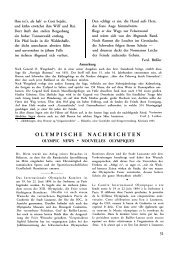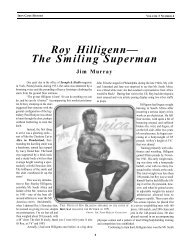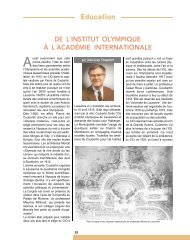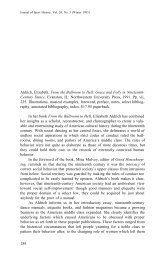There Goes This Art of Manliness: Naturism and Racial Hygiene in ...
There Goes This Art of Manliness: Naturism and Racial Hygiene in ...
There Goes This Art of Manliness: Naturism and Racial Hygiene in ...
Create successful ePaper yourself
Turn your PDF publications into a flip-book with our unique Google optimized e-Paper software.
<strong>Naturism</strong> <strong>and</strong> <strong>Racial</strong> <strong>Hygiene</strong> <strong>in</strong> Germany<br />
leave out the sports movement <strong>and</strong> other reform movements although<br />
the elements mentioned <strong>in</strong> this paper are present <strong>in</strong> there as well.<br />
some <strong>of</strong><br />
The Beauty Movement<br />
The n<strong>in</strong>eteenth century was preoccupied with beauty. Beauty, accord<strong>in</strong>g to<br />
Hegel, is the sensual realization <strong>of</strong> an idea. l2 He had claimed <strong>in</strong> his lectures on<br />
aesthetics that classical Greek art has been the perfection <strong>in</strong> the realm <strong>of</strong> beauty.<br />
“Noth<strong>in</strong>g can be nor become more beautiful. ” 13 Friedrich Theodor Vischer, the<br />
most important German aestheticist <strong>of</strong> the n<strong>in</strong>eteenth century s<strong>in</strong>ce Hegel, 14<br />
whose five volumes <strong>of</strong> aesthetics rema<strong>in</strong>ed most <strong>in</strong>fluential until World War I 15<br />
vulgarized Hegelian thought:<br />
In the realm <strong>of</strong> beauty there is cloudless joy. Here we are permitted to be sensual,<br />
as here the senses are the oblig<strong>in</strong>g sisters <strong>of</strong> the spirit, which they supply on<br />
bloom<strong>in</strong>g paths with the purest nourishment. Here we are satisfied as spiritual<br />
be<strong>in</strong>gs without hav<strong>in</strong>g to break with our sensuality . . . Cheerfulness <strong>and</strong> seriousness<br />
are <strong>in</strong> perfect peace <strong>and</strong> harmony. . . . It is Sunday. Workday souls do<br />
not underst<strong>and</strong> this <strong>and</strong> are writ<strong>in</strong>g about <strong>in</strong>decentness. 16<br />
The aesthetics <strong>of</strong> neo-classicism <strong>in</strong>cluded the view<strong>in</strong>g <strong>of</strong> nudes <strong>in</strong> the arts.<br />
<strong>There</strong> were special recommendations as to how to treat nudity <strong>in</strong> the classroom<br />
situation, where as a by-product “an impression <strong>of</strong> the beauty <strong>of</strong> the human<br />
body will be achieved which is valuable for the physical, aesthetic, <strong>and</strong> moral<br />
lives <strong>of</strong> the cultured man <strong>in</strong> his clothes.” 17<br />
The pa<strong>in</strong>ter Karl Wilhelm Diefenbach (1851-1913) is generally accredited 18<br />
to have been the first to comb<strong>in</strong>e the pa<strong>in</strong>t<strong>in</strong>g <strong>of</strong> nudes with practic<strong>in</strong>g nudism<br />
himself. 19 For the development <strong>of</strong> beauty <strong>and</strong> nudity as part <strong>of</strong> Jugendstil, 20 the<br />
new wave <strong>in</strong> art <strong>and</strong> architecture, his disciple Hugo Höppner (1868-1948),<br />
called Fidus, became most important. 21 Draw<strong>in</strong>gs by Fidus were published <strong>in</strong><br />
many journals. He can be regarded as the most <strong>in</strong>fluential illustrator <strong>of</strong> nudes<br />
from 1889 onward. 22 A typical example is shown <strong>in</strong> illustration 1.<br />
In 1901 he drew the title picture <strong>of</strong> the new journal Kraft und Schönheit<br />
zum Staatsamateur (Hannover; Fackelträger, 1975).<br />
12. Georg Wilhelm Friedrich Hegel, Werke <strong>in</strong> zwunzig Bänden (Frankfurt/M: Suhrkamp, 1970), 3: 151.<br />
13. Ibid., 14: 128.<br />
14. Michael Neumann, “Bildung und Gehorsam. Zur ästhetischen Ideologie des Bildungsbürgertums,” <strong>in</strong><br />
Das wilhelm<strong>in</strong>ische Bildungsbürgertum. Zur Sozialgeschichte se<strong>in</strong>er Idee (Gött<strong>in</strong>gen: V<strong>and</strong>enhoeck & Ruprecht,<br />
1976) 39.<br />
15. Willi Oelmüller, Friedrich Theodor Vischer und das Problem der nachhegelschen Ästhetik (Stuttgart:<br />
Kohlhammer, 1959).<br />
16. Friedrich Theodor Vischer, Über dus Erhabene und Komische (Stuttgart, 1837), 38-39.<br />
17. J. Friz, “Das Nackte <strong>in</strong> der Schule,” Christliches Kunstblatt für Kirche, Schule und Huus 49 (Jan. 1907):<br />
9-13 (He used Michelangelo’s Pass<strong>in</strong>g <strong>of</strong> the Soul to Adam as <strong>in</strong>structional example).<br />
18. Georg Pfitzner, Der <strong>Naturism</strong>us <strong>in</strong> Deutschlund, Osterreich und der Schweiz (Hamburg-Altona: Danehl,<br />
1964). 15.<br />
19. He led a hermit life near Munich <strong>and</strong> was brought to trial <strong>in</strong> 1888 for be<strong>in</strong>g <strong>in</strong> the nude with his son, <strong>and</strong><br />
with his disciple Fidus. Frecot, Fidus, 72f.<br />
20. Dolf Sternberger, “S<strong>in</strong>nlichkeit urn die Jahrhundertwende,” <strong>in</strong> Jost Herm<strong>and</strong>, ed., Jugendstil<br />
(Darmstadt: Wissenschaftliche, 1971), 100-106.<br />
21. Frecot, Fidus, 467-482 has the most complete collection <strong>of</strong> his work. <strong>There</strong> were two special editions <strong>of</strong><br />
journals deal<strong>in</strong>g with him Die Schönheit 16 (1919/20), No. 1; Die Freude 1 (1923/24), No. 16.<br />
22. Frecot, Fidus, 305-399 has a complete overview <strong>of</strong> his life work.<br />
137


